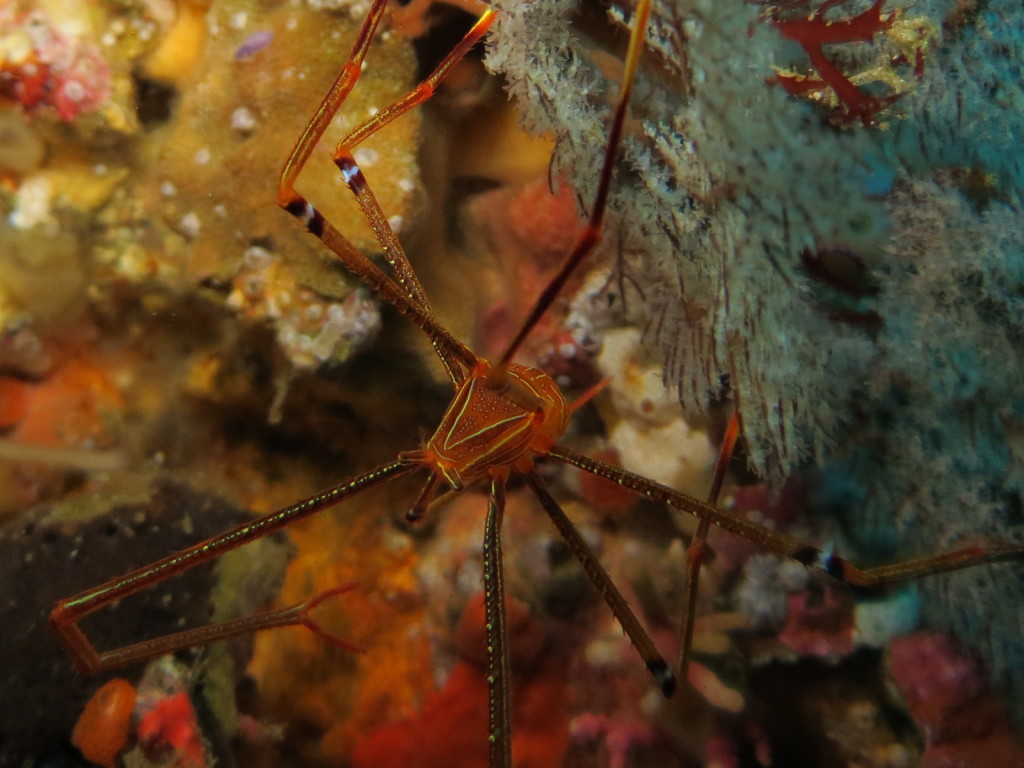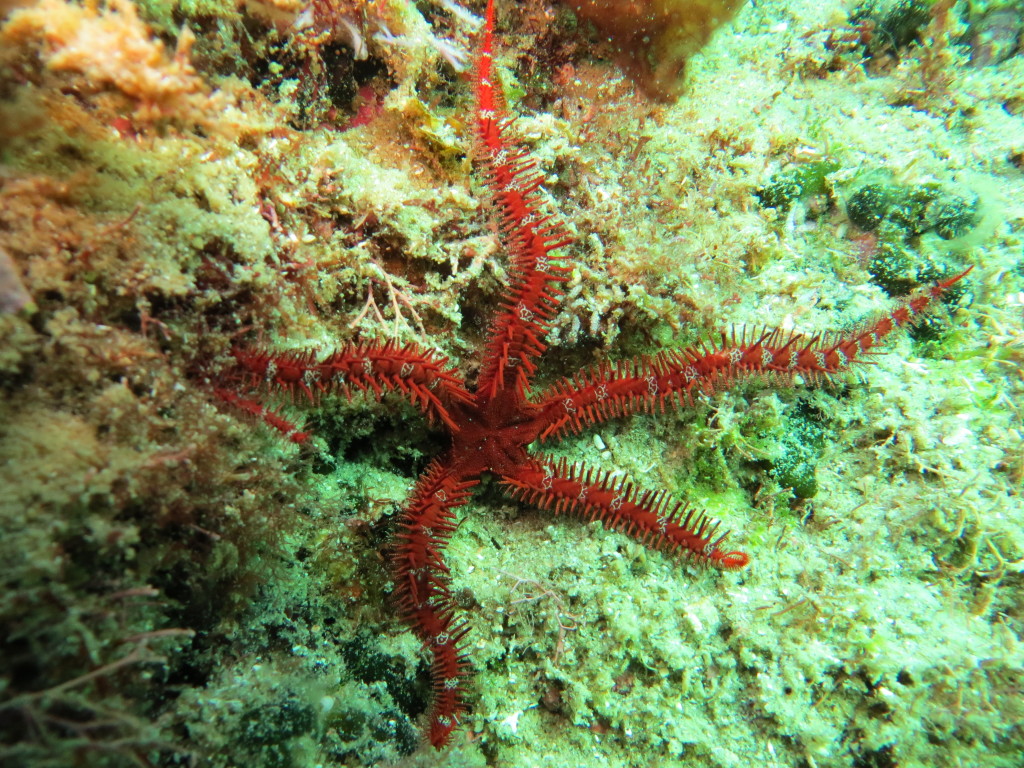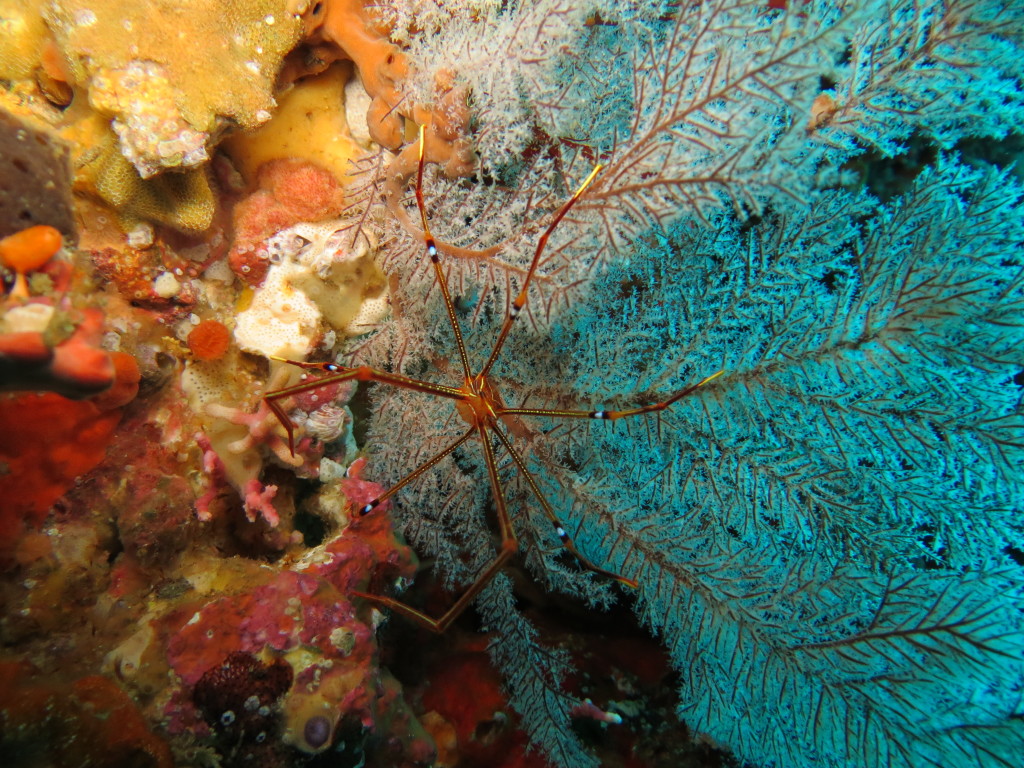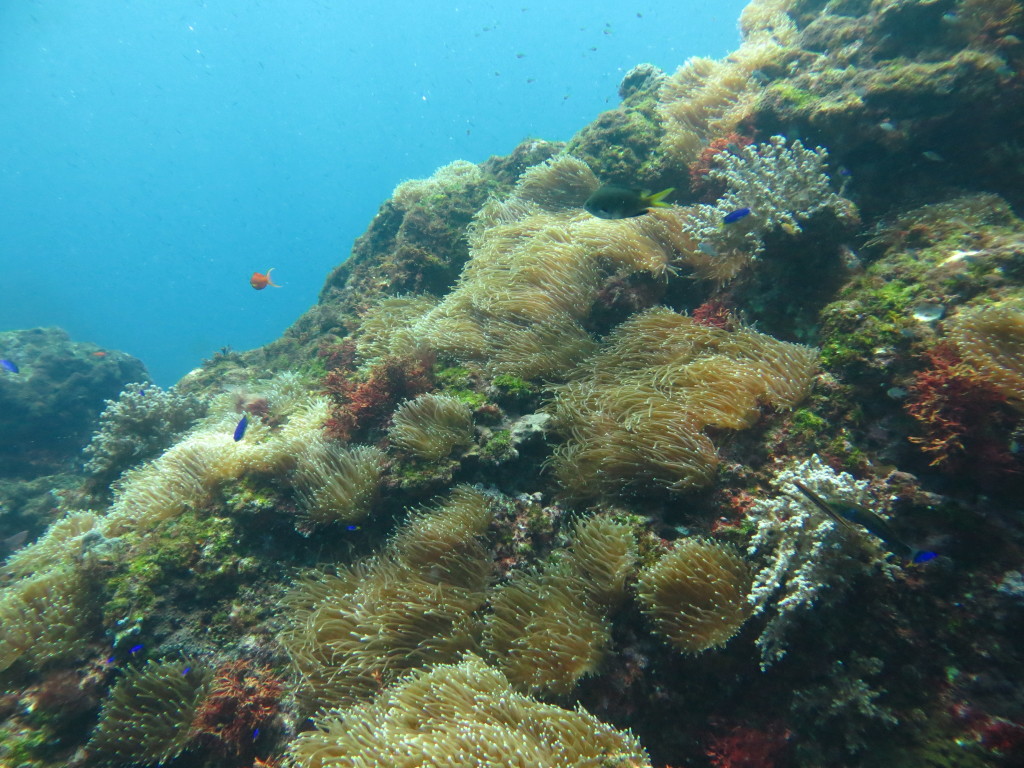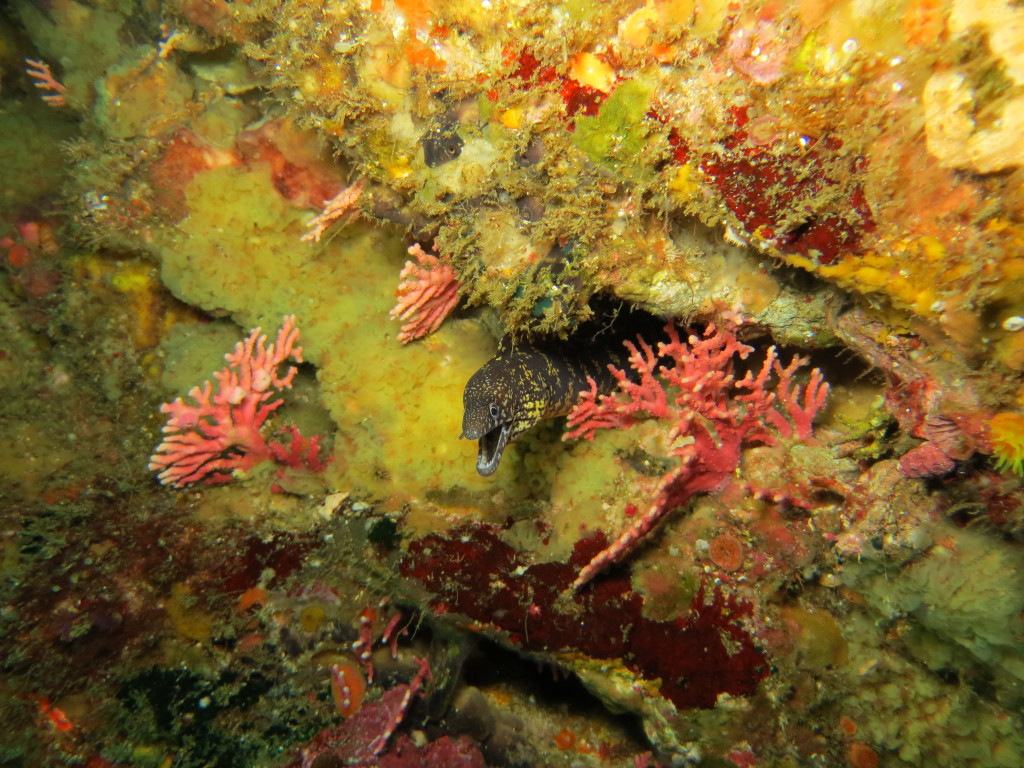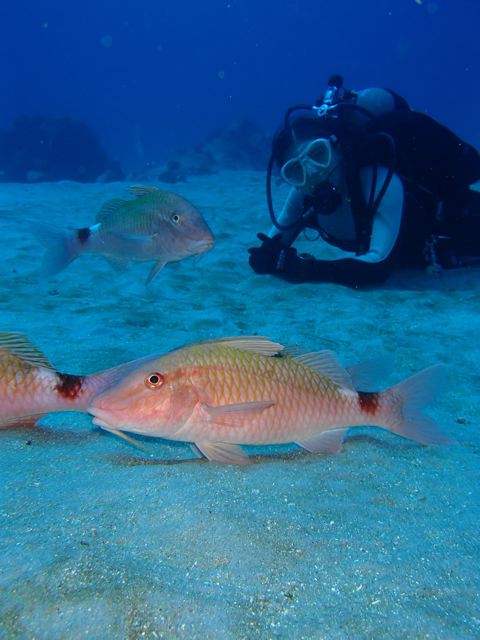by Bonnie Waycott
With tall, rocky structures and plenty of color, the underwater world of Kozushima seems to have it all. As I descend, a stunning scene unfolds below me in the afternoon light, with lots of rocks that look like they could be full of interesting macro life. Sponges add an occasional splash of yellow color, while oriental butterflyfish flit around.
I dive off Okinawa quite a bit, but I’m now witnessing a beautiful example of marine life in an area that’s only 3 hours and 45 minutes by boat from Tokyo. The island of Kozushima is a tiny paradise that bubbled up from the Pacific Ocean a long time ago, and its beautiful, white, sandy beaches make it ideal for divers, swimmers and snorkelers alike.
My adventures begin off Akasaki, Kozushima’s most popular spot for swimming, snorkeling, try-dives and training. As I swim out to sea and descend through the clear water, the sun’s rays dance around and the environment looks untouched, healthy and pristine. Akasaki, best for easy shore dives, features a rocky carpet attractively coated with some mild coral growth, a pleasing mix of reef fish species and great macro opportunities. Because the dive is relatively shallow, no more than around 33 feet (10 m), it’s photographic heaven and possible to keep shooting for hours. First I encounter some bluespotted cornetfish swirling around the rocks, and soon various little critters like crabs began to peer out of some of the nooks and crannies. Other treats also lay in store: sea slugs, starfish and some wrasses swaying in the surge.
After Akasaki I find myself on a boat heading further out to sea, where a treasure trove of walls, overhangs, rocky structures and a pleasing mix of species await. Dropping into the water at Hiradan Arch and descending to about 56 feet (17 m), a huge cave-like structure emerges, with some encrusting seashells, yellow sponges and a plethora of vibrant and colorful nudibranchs (ceratosoma trilobatum and phyllidiella pustulosa). Wrasses (clown coris) hang out nearby; a yellow-spotted boxfish forages for food; and I meet some gold-ribbon groupers and blackmouth goosefish.
At the next site, Arima, I find that I don’t really need the torch I’m carrying to see, but I’m glad I have it when the beam shines over a baby eel popping its head out of a hole. The shallow rocks at 26 feet (8 m) are awash with life, and numerous Christmas tree worms add a dash of color. Some red lionfish swim close by, and a few more easily identifiable creatures — boxfish and pufferfish — putter around. Further down at 39 feet (12 m) is a vast, sandy area, and after rounding a corner I come face-to-face with a small shoal of goatfish hanging out on the sand, more than happy for me to swim directly above them or even lie on the sand next to them. I continue my journey, marveling at my close encounter.
The calm, clear waters and relaxed shore diving make Kozushima an ideal destination for both newer divers and underwater photographers who enjoy benign conditions and plenty to see.


